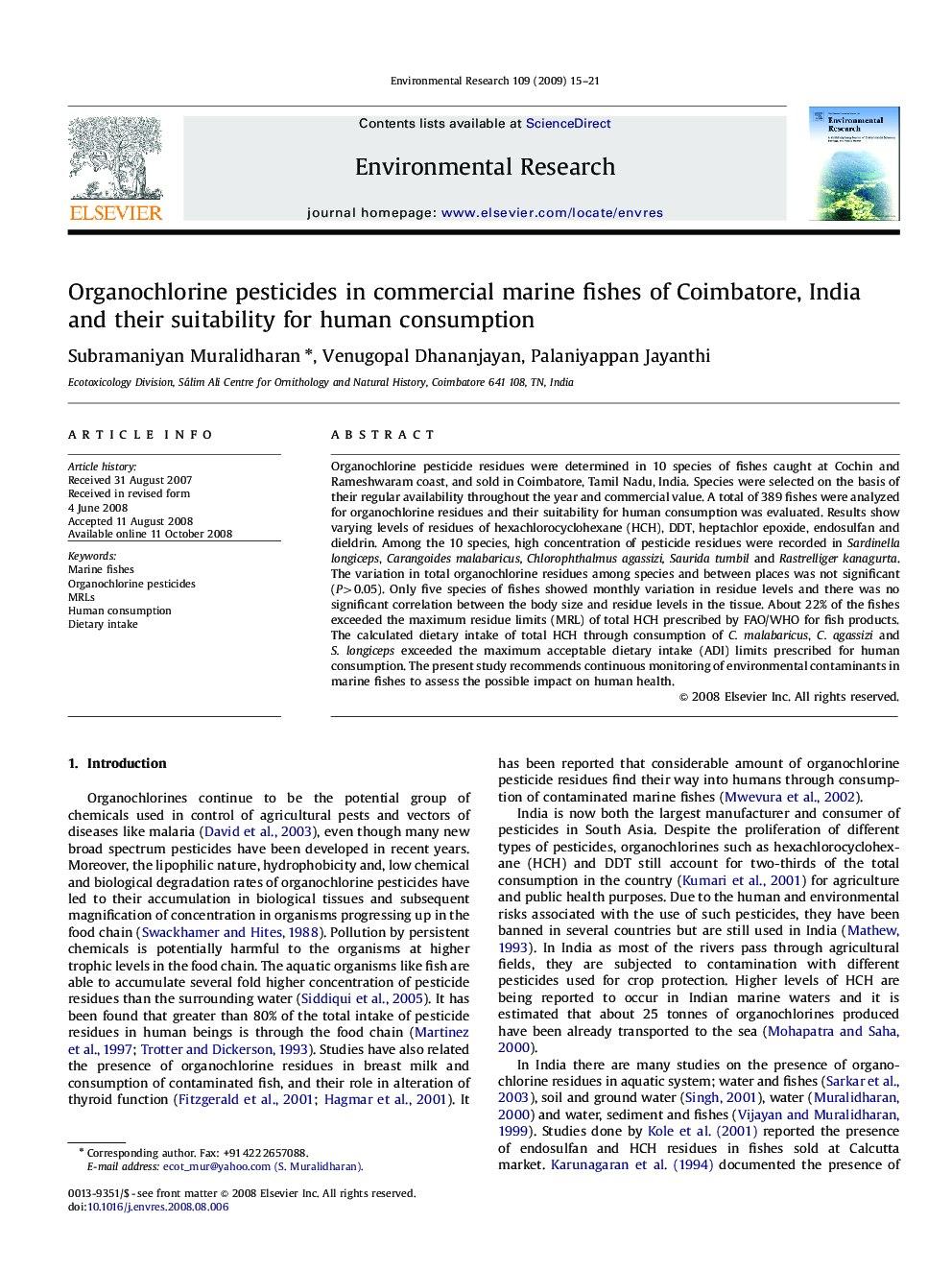| Article ID | Journal | Published Year | Pages | File Type |
|---|---|---|---|---|
| 4470513 | Environmental Research | 2009 | 7 Pages |
Organochlorine pesticide residues were determined in 10 species of fishes caught at Cochin and Rameshwaram coast, and sold in Coimbatore, Tamil Nadu, India. Species were selected on the basis of their regular availability throughout the year and commercial value. A total of 389 fishes were analyzed for organochlorine residues and their suitability for human consumption was evaluated. Results show varying levels of residues of hexachlorocyclohexane (HCH), DDT, heptachlor epoxide, endosulfan and dieldrin. Among the 10 species, high concentration of pesticide residues were recorded in Sardinella longiceps, Carangoides malabaricus, Chlorophthalmus agassizi, Saurida tumbil and Rastrelliger kanagurta. The variation in total organochlorine residues among species and between places was not significant (P>0.05). Only five species of fishes showed monthly variation in residue levels and there was no significant correlation between the body size and residue levels in the tissue. About 22% of the fishes exceeded the maximum residue limits (MRL) of total HCH prescribed by FAO/WHO for fish products. The calculated dietary intake of total HCH through consumption of C. malabaricus, C. agassizi and S. longiceps exceeded the maximum acceptable dietary intake (ADI) limits prescribed for human consumption. The present study recommends continuous monitoring of environmental contaminants in marine fishes to assess the possible impact on human health.
